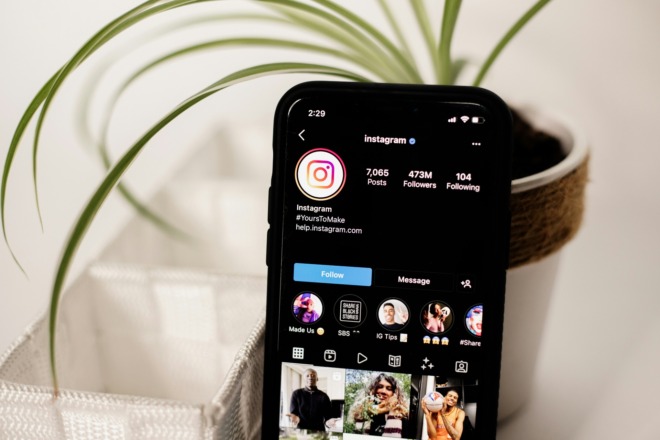The customer journey is the path customers take from first discovering your brand to advocating for it. This outline of the purchasing process is a vital part of marketing and communication strategies for businesses of all sizes. You can use it to better understand your customers’ thought processes and ensure you’re designing an accessible, welcoming customer experience.
1. Awareness
The first stage of the customer journey is awareness. This stage is also sometimes called the “discovery” stage. This is when a customer first becomes aware of your brand, products or service. They have identified some problem or desire and are most likely doing research on products that could meet those needs.
For example, customers are often doing a lot of Google searches when they get to the awareness stage. They might be reading guides, tips or how-to articles.
There are other ways a customer can get to the awareness stage, though. For instance, they might hear about your brand through word of mouth or social media. This is often preferable since these outlets can kickstart a good reputation for your brand in that customer’s mind. You can’t really control word-of-mouth marketing, but there are ways you can encourage customers to share your brand with friends and family, such as referral discounts.
2. Consideration
The next stage of the customer journey is consideration, when the customer begins thinking about buying something from your company. This is where you are most likely to have a make-or-break connection with a customer. If they don’t find something they like or they aren’t happy with the price, they’ll never make it past this stage.
The consideration stage is your chance to really show customers everything you have to offer. Luckily, at this stage customers are likely interacting with your brand through your website, so you can control many aspects of their experience. This means you have to prioritize great UX and web design to make sure you’re catching and maintaining customers’ attention.
Your website layout and theme will depend on your brand and what you’re selling. For example, a fashion website has different design needs than a babysitter’s website. However, there are some common design principles you can apply to make sure your website looks great. For instance, a simple, clear layout with a distinct color palette and theme will highlight your brand and ensure easy navigation.
3. Purchase
The third stage of the customer journey is where things really start heating up: the purchase stage. At this point, you’ve gotten a customer’s attention and impressed them with your products or services enough that they chose you over a competitor. This is great news!
The journey isn’t over, though. A lot can happen during the purchase stage. For example, even if a customer gets the product they ordered in perfect condition, they might still be dissatisfied if the shipping took too long.
You need to make sure that your customer has a good purchase experience so they actually get to the end of the purchase stage. There are a few ways you can do this. For example, offer first-time shoppers a discount, free shipping or a free trial. Make sure your checkout system is easy to navigate and your shipping fees are transparent.
4. Retention
After getting a customer through their first purchase from your brand, you want to make sure they stick around and buy from you again. This is the retention stage, also sometimes called the engagement stage.
Now it’s time to make an effort to build on your initial connection with your new customer. At this stage, the emphasis is on the customer experience. Did they enjoy their first purchase from your brand? Did they need customer support? If so, was it helpful? Was there anything about their experience that they didn’t like?
These are the kinds of questions you need to ask to understand and measure customer satisfaction. One helpful tool for this stage is customer surveys, which you can request in exchange for a discount code or free shipping on the customer’s next order.
If a customer reports having a bad experience, make an effort to win them back over and get a second chance. Discounts, free samples, free shipping and replacement products are often great peace offerings for dissatisfied customers.
5. Loyalty
The loyalty stage of the customer journey is the dream for every business owner. At this stage, a customer becomes a repeat buyer and an advocate for your brand. They are likely to advertise your brand through word of mouth by telling friends and family how much they like your products or services.
The loyalty stage is also where you gain a concrete edge over competitors. When customers get to this stage, they are unlikely to buy similar products from other brands, preferring yours first. Ideally, you want to convert more customers to the loyalty stage than your competitors do.
There are a few strategies you can use to promote brand loyalty. For example, you could create a rewards program to encourage repeat purchases. You could also use social media to build a community around your brand so people identify with your values, not just your products. Finally, customer service has to be a top priority if you want to get loyal customers. Prioritize excellent communication every single time you interact with a customer to ensure they feel appreciated and understood.
Leveraging the Customer Journey
The customer journey is a rough outline of the way customers go from first discovering your brand to becoming an advocate for it. This journey can look different for different customers and brands, though. A customer might become an advocate after one purchase or after a dozen or maybe not at all.
Use the customer journey as a roadmap to understand how you can foster good relationships with different types of customers. Recognizing the stages a customer may go through before making a purchase can help you align your marketing and communications with their needs and build a better experience.
About The Author
Eleanor Hecks is the Editor-in-Chief of Designerly Magazine, an online publication dedicated to providing in-depth content from the design and marketing industries. When she's not designing or writing code, you can find her exploring the outdoors with her husband and dog in their RV, burning calories at a local Zumba class, or curled up with a good book with her cats Gem and Cali.
You can find more of Eleanor's work at www.eleanorhecks.com.


